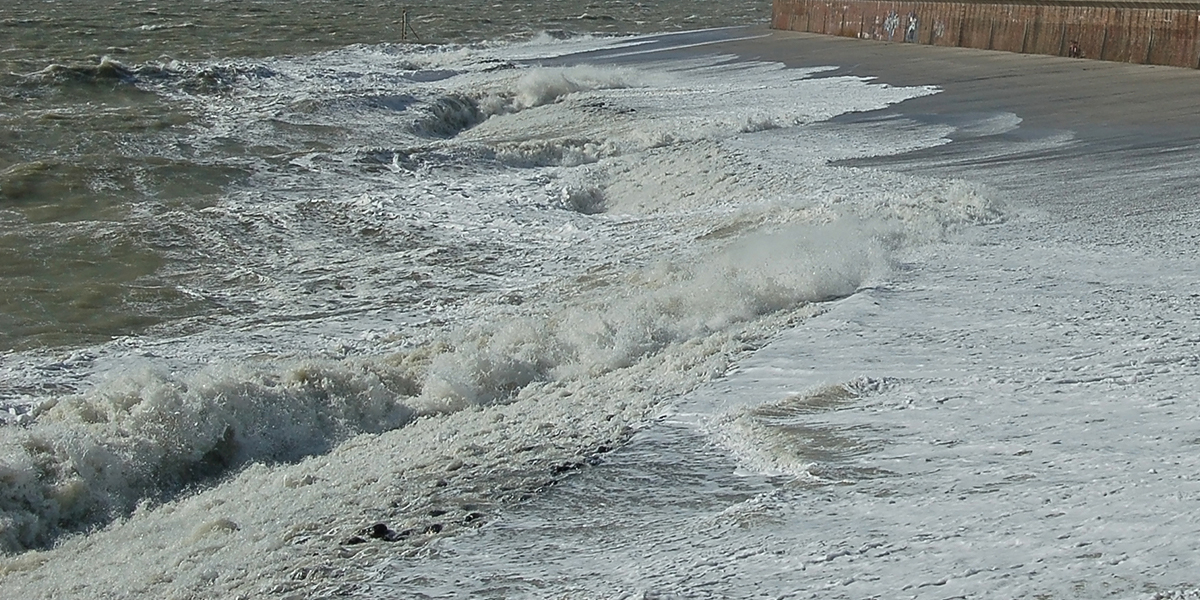Sea-level relationships
Analyzing the evolution of the Dutch coast requires dynamically coupled models of glacio- and hydro isostatic adjustment (GIA) and sedimentation. The weight changes by these two components have to be disentangled to understand climate-induced sea-level change and sedimentary processes well. Hereto we apply data assimilation techniques in GIA models that take in geological mapping products for the North Sea area. For the first time, the respective contribution of ice, water, sediment and tectonics to current vertical land motions in the Netherlands will be assessed. Results will have repercussions on the 'Building with nature' approach used in coastal management strategies.
|
|
|
We now have a chance to make the weight of sediments important in analysis of the geological history of the Dutch delta and the Wadden Sea |
| Paolo Stocchi, Kim Cohen |
Project description
Sea-level rise (SLR) is one of the most important consequences of global warming and carries significant repercussions on coastal human settlements and natural ecosystems1,2. Global SLR research aims at solving the so-called 'sea-level budget' over the last few glacial-interglacial cycles.3 Global-scale research efforts then provide the forcing and boundary conditions for regional-scale GIA modelling (Fig. 1ab), such as for the North Sea area4. At that scale, sediment isostasy an compaction (SIC) becomes an important additional factor that has to be implemented in the modelling5, through data intake and adapted algorithms – the topic of this proposal. Regional sedimentation (Fig. 1c) varied greatly in rates and amounts and locations between glacial and interglacial times, partly controlled by SLR and GIA movements but also independently6. By inserting sedimentation from mapping knowledge (data assimilation) in otherwise deterministic geophysical models, we will reveal the magnitude of local SIC vs. regional GIA patterns which we reckon to be significant for our understanding of centennialmillennial coastal plain development and habitat evolution, and for evaluating anthropogenic vs. natural sedimentation5.

Source materials used in figure in modified and recombined form are: (left panel) Reconstruction by Svendsen et al. 2004 Boreas;
(right panel) Coast-line perpendicular schematic geological sections Holocene (Vos 2015, Deltares & RCE) and Pleistocene (Teunissen, UU MSc Thesis with TNO).
Research through upgraded modeling approaches aims at unravelling the links between sea level change and geological scale sedimentation for the North Sea region.
Main goals
- To assimilate geological data products (3D mapping6,7,8: base and top surface, volumes per time frame) for Marine isotope Stage (MIS) 6 (glacial, ~ 250 ka), MIS 5 (interglacial, ~ 125 ka), Last glacial Maximum (~ 20 ka), and Holocene transgression and high stand, for SIC analysis and to evaluate realism of modeled coastlines.
- To establish a dynamical self-consistent relationship between the low- and high-stand stratigraphy and the glacial and interglacial periods respectively.
- To quantify respective GIA and SIC contributions to regional past, current and future RSL changes.
The availability of high-quality geological data makes the North Sea and the time frame under consideration a perfect case study to calibrate GIA models, that in turn are used for future projections.
The proposed research will rely on numerical modelling and geological/stratigraphic data assimilation. A novel algorithm will be implemented to dynamically couple the redistribution of sediments to the ice-driven and solid-Earth-modulated RSL changes by including the self-consistent sediments isostasy and compaction (Fig. 1c). The model is an extension of an available algorithm9-11 and includes full parallelization and laterally heterogeneous meshes for higher spatial resolution12. Sedimentation based on geological data assimilation requires physics-inspired interpolation equations to regularize the data in between irregularly spaced data-insertion time steps. To develop and implement this will be the key methodological step and challenge. We will employ data assimilation techniques that combine prescriptions and rules based on diffusion13 and fuzzy logic14 thereby simulating realistic basin rim and shelf sedimentation within geological bounds of the input data.
References
- Oppenheimer, M., et al., In: IPCC Special Report on the Ocean and Cryosphere in a Changing Climate (2019).
- Chown, S. L. and Duffy, G. A, Nature Ecology and Evolution 1, 1219-1221 (2017).
- Rovere, A., et al., EPSL, 387, 27-33 (2014).
- Vermeersen, B.L.A., et al., Neth. J. of Geosc. 97, 79-127 (2018).
- Ferrier, K.L., et al., Past Global Changes Magazine 27(1), 24-25 (2019).
- Peeters, J., et al., Earth Science Reviews 188, 482-497 (2019).
- Koster, K. et al., Basin Research 29, 775-797 (2017).
- Cohen, K.M.. Dataset Holocene Buried Landscapes NL. DANS. 10.17026/dans-zck-y7ww (2017)
- Spada, G., and Stocchi, P., Comp. & Geosc., (2007).
- Stocchi, P., et al., Nature Geoscience 6, 380-384 (2013).
- de Boer, B., et al., Geosci. Model Dev. Discuss. 7, 2141-2156 (2014).
- de Boer, B., et al., Quat. Sci. Rev. 169, 13-28 (2017).
- Kubo, Y., et al., Marine Geology 234, 233-243 (2006).
- Nordlund, U., Comp. & Geosci. 25, 449-456 (1999).

Connected themes
- Our Dynamic Coasts
- Our Future Ocean


